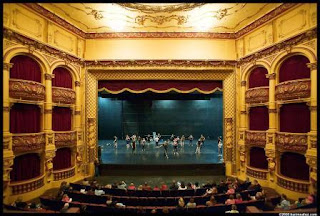This is my final cut for DSDN101 Project 3 - The Clip. I hope you like it :)
Tuesday, 19 June 2012
DSDN101 Project 3 - The Clip
This is my final cut for DSDN101 Project 3 - The Clip. I hope you like it :)
The Clip - Storyboard
This is my storyboard for DSDN101 Project 3 "The Clip". I decided against adding annotations to the frames as I felt the image was powerful enough to speak for itself.
Design Standpoint
 |
| Network, B. A. (Producer). (2009). E-Waste Dumping in Ghana. Retrieved from http://www.electronicstakeback.com/global-e-waste-dumping/ |
For my subject of Industrial Design, I
decided to focus on the ethics and responsibilities an Industrial Designer has
in relation to the environmental impact of the products they design.
As the focus of Industrial Design is
effectively geared toward mass production, attention must be paid to what
happens to the product once it has lived out it's useful lifespan - "If one’s really honest with
oneself, most of what you design ends up in a landfill somewhere." (Tim Brown,
2009)
The question is then, how can we reduce the waste that mass produced
products cause? It is a problem that both the consumer and designer often bury
and forget - for example in Australia, a country of culture similar to New
Zealand, the E-Waste for computers alone is projected to be 11.1 million per
annum in comparison to the 500,000 recycled per annum, with similar trends on
all other electronic equipment. (Waste,
2009-10-13)
These trends are also accelerating at an rate in the current years. (Callie W. Babbitt*†, 2009) There are many elements that affect a
products longevity; aesthetics, time between technological improvements,
durability, and consumer trends to name a few.
Many of these aspects have been addressed by both designer and consumer,
for which we have recycling programs, technological improvements into
biodegradability, and many campaigns to "enjoy what you have" , but
all run on the assumption that what is designed will inevitably be thrown away.
The standpoint I choose to take is that this assumption need not be true. The
question I ask is, how can we design products so that we can continue designing
them? For example, could we design a cellphone that could be upgraded instead
of thrown away and replaced by a newer model?
Monday, 4 June 2012
Stop Motion Inspiration
I absolutely adore this clip, such a solemn little tale that really catches your heart. I would really like to find out how to do this style of animation that gives depth to the scenes and uses different kinds of stop motion that just seem to mesh together.
Stop Motion Inspiration
I was having a little trouble thinking of how to re-do my storyboard in a style that was not constricted by boxes which is when I recalled this video for Madvillain's track "All Caps". Check it out! Quite literally breaks the boundaries of the traditional storyboard :)
Friday, 1 June 2012
Locovisual - St. James Theatre
 |
| Retrieved from en.wikipedia.org/wiki/File:St_James_Theatre.jpg |
St James
Theatre, designed by Henry White in 1912
was at the time the largest theatre for vaudeville and pictures in
Australasia. (Lee, 2007)
The theatre
was designed for live performances and silent movies, but over the years has
been modified and adapted to house performances ranging from live Shakespearean
performances, to concerts and movies, and is now the home of The Royal New
Zealand Ballet. ("The St. James Theatre ")
St James
Theatre is designed in a Baroque Revival style; from the outside this can be identified by a facade adorned with classically inspired columns with
curvilinear organic capitals, a combination of linear and domed archways, a pastel
stucco finish, and plaster statues that pay homage to the Statue of Apollo. The
interior is highly ornamental, decorated with curvaceous plastering, dancing
cupids, harps and horns all with gold-leaf gilding. (Blunt, 1978)
 |
| Retrieved from http://www.johnherber.co.nz/Photo%20Gallery.htm |
Historically,
Baroque theatres were designed with the greatest technology available such that
stages could be transformed mid-performance to provide new settings in seconds
whilst hiding the unsightly elements key to the stage's function. This gave
rise to a new dynamic available for playwrights to weave into their work, and
effectively created a new theatrical genre providing viewers with a multimedia
experience. (Norberg-Schulz, 1972) Theatres intending to screen such
performances would generally be modeled in Baroque fashion, and as such
reflects the styles of performance on offer such as at the St. James Theatre . St.
James Theatre also intended to use the greatest technology available and was
the first theatre in the world to be built from steel and the finest English
concrete reinforced with top quality cow hair. (Cochran, 1993)
St. James
Theatre has survived financial turmoil and threat of demolition, (McGill, 1998) and has been once again been recognised as an
"outstanding cultural and historically significant" theatre and focus
for performing arts in New Zealand. ("The St. James Theatre ")
McGill, D. (1998). Full circle : the
history of the St James Theatre. Wellington, NZ: Phantom House.
Subscribe to:
Comments (Atom)
